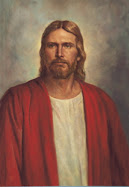This hymn has been sung so much in my lifetime, that I had it pretty much memorized by the time I was in college. I absolutely love the words. But there is an irony which my Dad first helped me notice--the only thing that talks about a prophet is the very first line of the first verse. And that is it. Yet this is the song we often sing when there is a fireside or some such that the prophet comes to speak at. There are a couple of other songs that are more fully about prophets. And my dad and mom wrote a hymn about them, too. But this is the one we always sing. The irony is what gets to me on that, but otherwise, I love this hymn. I love that it is a gratitude hymn, telling of all the things we are grateful that Heavenly Father has given us through the restored Gospel.
Favorite lines:
To lighten our minds with its [Gospel] rays
***There is hope smiling brightly before us***
We doubt not the Lord nor his goodness
The entire 3rd verse.
From the history book
George Pyper described it as "exclusively a Latter-day Saint hymn; a Mormon heart-throb; a song of the Restoration." The author William Fowler was a convert who served as a missionary in England before coming to America. He presented this at a meeting while in England, while President Joseph F. Smith was visiting.
The composer wrote the tune and words when an officer friend of hers was killed in battle. So a song that was written to honor someone's life became one of great praise. And there was an editing change in the 1985 hymnal to accommodate what congregations had gotten in the habit of singing. (Third line should have been A A A A A G F on "lighten our minds with its rays." But now it is A A B A A G F.)
